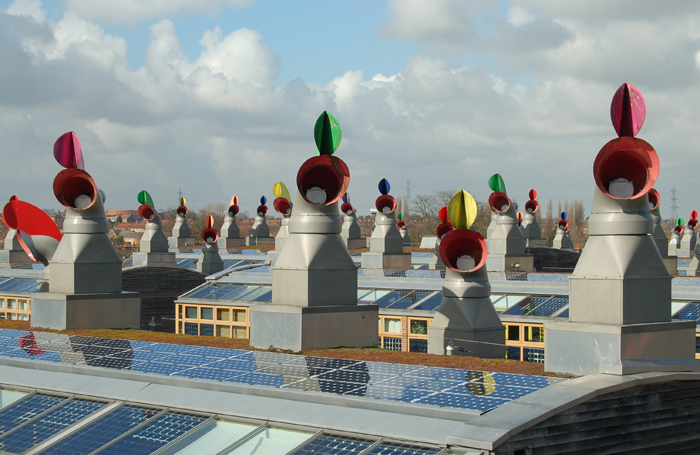Mayor of London Sadiq Khan’s recently published draft 'London Environment Strategy' provides a comprehensive set of proposals aimed at improving the capital’s environment and reducing its footprint.
The draft strategy makes clear at the outset that it has taken the most ambitious view of what is possible. It combines firm policies and specific initiatives with aspirational targets that require further development of a route to implementation.
The strategy addresses air quality, green spaces, noise, as well as climate change and energy consumption, the latter referencing low carbon policies for existing and new buildings.
One of the stand-out proposals is the Mayor’s plan to introduce a zero carbon standard for non-residential buildings in the London Plan from 2019 to ensure that all new major developments in London contribute to the longer-term zero carbon ambition of the city.

On the housing front, planning applications considered by Khan are already expected to achieve reductions of 36% beyond Part L requirements as required by his 2016 zero carbon homes policy. Developers are able to meet obligations through carbon abatement measures as necessary.
However, the strategy states that across London, new housing developments last year averaged a carbon reduction of just 7% beyond Part L.
The strategy sets out ambitious retro-fitting and energy efficiency goals for existing housing stock, including the Mayor’s Energy Leap Project, which aims at delivering some of the first whole house zero energy retrofits in London and the UK.
RIBA Sustainable Futures Group member Alex Whitcroft says the Khan’s draft Strategy is a bold and ambitious plan that does not shy away from some hard truths. It highlights the statistic that 77% of London’s carbon emissions come from homes and workplaces.
‘As a strategy, the document understandably does not delve into many of the technical and policy details that will require resolving to deliver its aims. However, there is a reassuring thoroughness, such as highlighting links between regional deprivation, fuel poverty, and unhealthy buildings; introducing 'natural capital accounting' for developments; and ensuring the carbon emissions of the city’s hinterland are tracked and accounted for. They make up as much as 40% of the city’s total emissions,’ says Whitcroft.
‘The level of ambition is also worthy of celebration, such as year-on-year increases in greenery and 'natural capital' and all new developments to be net-zero carbon by 2019.’
Whitcroft also commends the theme running through the strategy of not just tackling London-specific issues, but ensuring that interventions prioritise improved equality and support of those most vulnerable and in need.
‘There are also some alarmingly underwhelming targets, such as meeting only 15% of London’s energy demand from renewable energy by 2030 – there are some overseas cities going beyond this already – or still relying on a relatively sizable amount of natural gas in 2050, only achieving a fully zero emission bus fleet in 2037, 20 years away.’
‘In fact, a lot of it seems slower than it needs to be if we are to avoid catastrophic climate change and human harm,’ Whitcroft adds.
Elena Marco, Head of Architecture and the Built Environment at UWE and also a member of the Sustainable Futures Group, is encouraged by the Mayor’s strategy, but is concerned about how much he can deliver on his own.
‘Environmental policies have been disappearing at national level, so the Mayor’s efforts have to be welcomed. He is a strong advocate, but without similar commitment from national government these policies will be difficult to deliver,’ says Marco.
‘The Mayor will need national policy frameworks to succeed in some of these areas, and these will depend on the position the UK government takes beyond Brexit and the environmental policy requirements of the EU.’
Public consultation on the Mayor’s draft London Environment Strategy is now open until 17 November 2017.
Thanks to Alex Whitcroft, Associate Director, Bere Architects & Director, KIN; Elena Marco, Head of Architecture and the Built Environment, UWE.
Text by Neal Morris. This is a ‘Practice News’ post edited by the RIBA Practice team. The team would like to hear your feedback and ideas for topics: practice@riba.org
Photo by Tom Chance from Peckam (Flickr: Wind cowl chatter)
Posted on 31 August 2017









